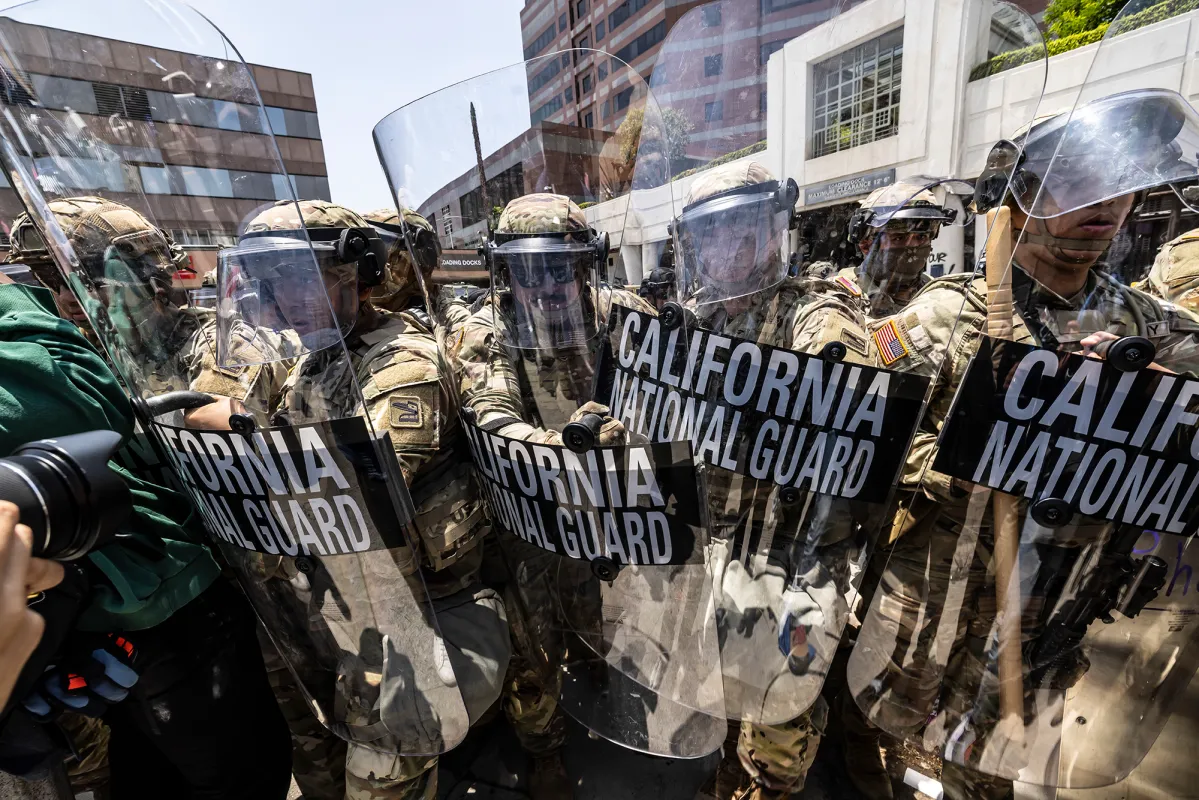Two West Virginia National Guard members were critically wounded Wednesday, November 26, 2025, in a targeted shooting just blocks from the White House, rattling a city that had been under heavy federal security since President Donald Trump’s law-and-order takeover in August.
The attack unfolded shortly after 2 p.m. near the Farragut West Metro station, where officials say a gunman rounded a corner, raised a firearm, and opened fire on the pair—one man, one woman—without warning. Fellow Guard members rushed in, subdued the shooter, and held him until authorities arrived. Both the victims and the suspect were transported to local hospitals in critical condition.
In a televised address Wednesday night, President Trump called the shooting “an act of evil” and “a crime against our entire nation,” framing it as a national security failure tied to immigration vetting. Citing information from Homeland Security, Trump said the suspect arrived from Afghanistan in 2021. But multiple law-enforcement sources later confirmed the suspect—29-year-old Rahmanullah Lakanwal—was granted asylum this April, under the Trump administration.
That detail complicates the political response. Within minutes of Trump’s remarks, U.S. Citizenship and Immigration Services announced an indefinite halt to all Afghan-related immigration processing pending a new security review.
Federal investigators are now probing whether the shooting may have been inspired by international extremist groups. The FBI, ATF, U.S. Marshals, and the D.C. U.S. Attorney’s Office are leading the investigation, with more details expected Thursday.
How the Attack Happened
According to Metropolitan Police Executive Assistant Chief Jeffrey Carroll, the shooting appeared to be an ambush by a lone gunman. Mayor Muriel Bowser said the suspect “appeared to target” the Guard members, though the motive is still unknown.
Maj. Gen. Tim Seward, head of the West Virginia National Guard, credited the fast reaction of nearby Guard members for “neutralizing the assailant” and preventing greater loss of life. Earlier in the day, Gov. Jim Justice briefly announced the two Guardsmen had died—before clarifying that their conditions were still uncertain.
The White House was placed under temporary lockdown, lifted around 5 p.m. President Trump was at Mar-a-Lago for Thanksgiving.
A City Still on Edge
The Guard members were part of the 2,188-person National Guard deployment overseeing D.C. security as part of Trump’s federal intervention—an unprecedented expansion of federal control over the city’s policing.
Just a day before the shooting, during the annual turkey pardon, Trump praised his administration for making Washington “a totally safe city,” claiming residents could “walk down any street” without fear.
Wednesday’s violence shattered that narrative, prompting swift reactions across the administration.
Vice President JD Vance, speaking to troops at Fort Campbell, called it “a somber reminder” of the risks faced by service members even on domestic duty. Defense Secretary Pete Hegseth condemned the “cowardly, dastardly act” and said Trump directed him to deploy an additional 500 Guardsmen to D.C.
Gen. Steven Nordhaus, chief of the National Guard Bureau, said he was heading to Washington with senior enlisted leaders. “We are devastated by this senseless act of violence,” he said.
As investigators work to determine why two Guardsmen became the targets of an afternoon ambush, Washington wakes to a grim reality: even the most heavily secured city in America remains vulnerable.

